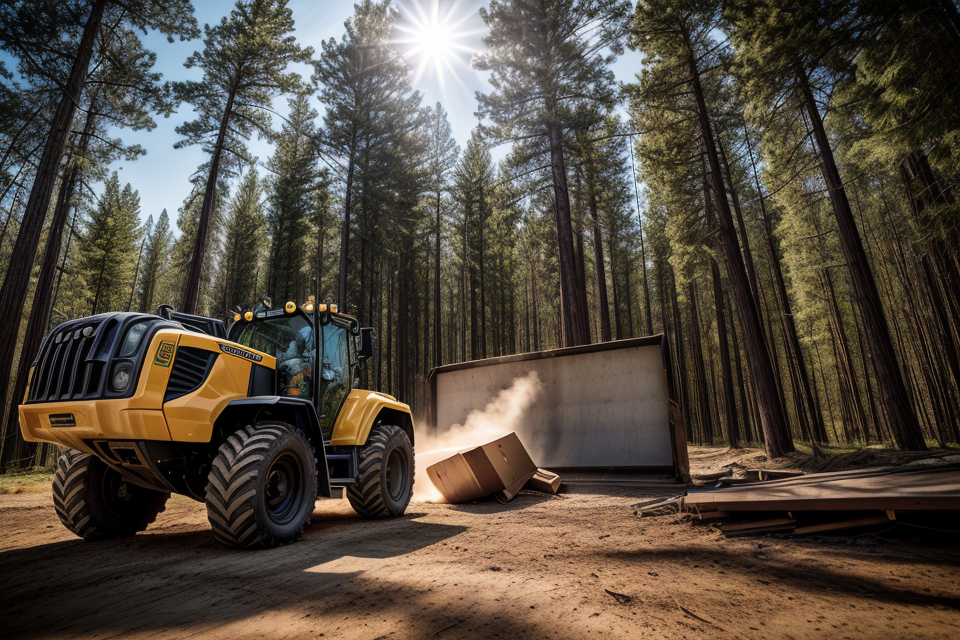Are you an outdoor enthusiast looking to upgrade your gear? Or are you a business looking to tap into the booming outdoor equipment market? Whatever your reason, you’re in for a surprise. The outdoor equipment market is worth more than you might think. In this article, we’ll take a closer look at the staggering size of the outdoor equipment market and how it’s growing. Get ready to be amazed by the sheer value of this industry and the endless opportunities it presents.
The Growing Demand for Outdoor Activities
Trends in Outdoor Recreation
Increase in Popularity of Outdoor Activities
The popularity of outdoor activities has seen a significant rise in recent years. With the growing awareness of the importance of physical activity and mental well-being, people are seeking ways to connect with nature and engage in activities that promote a healthy lifestyle. This trend has led to an increased demand for outdoor equipment, ranging from camping gear to sports equipment, as more people seek to participate in outdoor activities.
Environmental Concerns and Urbanization
Another factor contributing to the growing demand for outdoor equipment is the increasing concern for the environment. As more people become aware of the impact of human activities on the environment, there is a growing interest in outdoor activities that have a minimal impact on the environment. This has led to a rise in the popularity of activities such as hiking, camping, and cycling, which are considered more environmentally friendly than traditional forms of recreation.
In addition, urbanization has played a role in the growing demand for outdoor equipment. As more people move to urban areas, they are seeking ways to escape the hustle and bustle of city life and connect with nature. This has led to an increased interest in outdoor activities, such as hiking and camping, which provide an opportunity to escape the city and experience the great outdoors.
Technological Advancements
Technological advancements have also contributed to the growing demand for outdoor equipment. With the development of new materials and technologies, outdoor equipment has become lighter, more durable, and more functional. This has made it easier for people to participate in outdoor activities, as they can now access high-quality equipment that is designed to meet their specific needs. Additionally, technological advancements have made it easier for people to plan and organize outdoor activities, with the development of mobile apps and online resources that provide information on trails, weather conditions, and other important factors.
Impact on the Outdoor Equipment Market
Growing Number of Participants
As more people seek to escape the hustle and bustle of city life, outdoor activities have gained significant popularity. From hiking and camping to cycling and kayaking, these pursuits attract individuals from all walks of life, each with their unique equipment needs. As the number of participants continues to grow, so too does the demand for specialized gear designed to enhance their experiences and keep them safe.
Need for High-Quality Equipment
In an increasingly competitive market, consumers are demanding higher-quality outdoor equipment that not only meets their performance expectations but also stands the test of time. With the growing realization that investing in quality gear can lead to more enjoyable and sustainable outdoor experiences, manufacturers are pushed to innovate and create products that are durable, functional, and reliable. This shift towards quality has resulted in a more discerning consumer base, one that is willing to pay a premium for gear that can withstand the demands of their chosen activities.
Wide Range of Activities and Equipment Types
The outdoor equipment market caters to a diverse range of activities, from leisurely day hikes to extreme sports such as rock climbing and white-water rafting. Each activity requires a specific set of equipment tailored to its unique challenges and demands. As a result, the market has diversified to include a broad spectrum of products, from technical apparel and footwear to specialized camping gear and watercraft. This wide range of equipment types and specializations allows manufacturers to target niche markets and cater to the needs of enthusiasts who seek the latest advancements in gear designed specifically for their chosen pursuits.
The Evolution of Outdoor Equipment
Historical Development
Early Outdoor Equipment
The use of outdoor equipment can be traced back to ancient times, where early humans relied on basic tools and weapons to survive in the wilderness. These early tools included simple items such as stone knives, spears, and bows, which were used for hunting and other survival tasks.
Advancements in Materials and Design
As time passed, outdoor equipment evolved to include more advanced tools and technologies. For example, during the Middle Ages, people began to use metal for tools and weapons, which provided greater durability and strength. In the 19th century, the development of plastics and synthetic materials revolutionized the outdoor equipment industry, allowing for lighter and more durable products.
The Rise of Specialized Equipment
In recent years, the outdoor equipment market has seen a significant increase in the number of specialized products available. This trend has been driven by the growing popularity of outdoor activities such as hiking, camping, and rock climbing, as well as advancements in materials science and design. As a result, outdoor enthusiasts now have access to a wide range of specialized equipment, including technical clothing, backpacking gear, and climbing hardware, that is specifically designed to meet the needs of different activities and environments.
Market Segmentation
As the outdoor equipment market continues to grow, it is essential to understand the various segments that make up this diverse industry. By analyzing the different types of outdoor equipment, trends in consumer preferences, and the role of technology, we can gain a better understanding of the market segmentation within the outdoor equipment industry.
Types of Outdoor Equipment
The outdoor equipment market is segmented based on the type of equipment. The most common types of outdoor equipment include:
- Camping equipment: This includes tents, sleeping bags, backpacks, and other gear necessary for camping trips.
- Hiking equipment: Hiking equipment includes boots, trekking poles, and other accessories necessary for hiking.
- Cycling equipment: Cycling equipment includes bicycles, helmets, and other accessories necessary for cycling.
- Water sports equipment: Water sports equipment includes surfboards, paddleboards, kayaks, and other accessories necessary for water sports.
- Winter sports equipment: Winter sports equipment includes skis, snowboards, and other accessories necessary for winter sports.
Trends in Consumer Preferences
The outdoor equipment market is also segmented based on consumer preferences. Over the years, there has been a shift in consumer preferences towards sustainable and eco-friendly products. Consumers are now more conscious of the environmental impact of their purchases and are increasingly looking for products that are made from sustainable materials and have a lower carbon footprint.
Additionally, there has been a growing trend towards adventure tourism, which has led to an increase in demand for high-quality outdoor equipment. Consumers are now more willing to invest in high-quality equipment that can withstand the demands of adventure tourism.
The Role of Technology
Technology has also played a significant role in the evolution of the outdoor equipment market. Advancements in materials science and design have led to the development of lighter and more durable equipment. Additionally, technology has enabled the creation of smart outdoor equipment that can be tracked and monitored using mobile devices.
Furthermore, technology has made it easier for consumers to research and purchase outdoor equipment online. E-commerce platforms have made it possible for consumers to access a wide range of outdoor equipment from the comfort of their homes.
In conclusion, the outdoor equipment market is segmented based on the type of equipment, consumer preferences, and the role of technology. Understanding these segments is crucial for businesses looking to tap into this growing market.
The Economics of Outdoor Equipment
Market Size and Growth
- Market Value and Forecast
- According to recent reports, the global outdoor equipment market was valued at approximately $64.5 billion in 2020 and is projected to reach a value of around $83.4 billion by 2026, growing at a CAGR of around 4.1% during the forecast period.
- The growth of the market can be attributed to several factors, including an increase in outdoor recreational activities, rising disposable incomes, and a growing awareness of the importance of spending time in nature.
- Geographic Distribution
- North America dominates the global outdoor equipment market, accounting for the largest share in terms of revenue.
- This can be attributed to the presence of a large number of outdoor enthusiasts, high disposable incomes, and the availability of diverse recreational activities in the region.
- Europe and Asia-Pacific are also significant markets for outdoor equipment, with a growing interest in outdoor activities driving the demand for related products.
- Market Share of Key Players
- The outdoor equipment market is highly competitive, with several key players holding a significant share of the market.
- Some of the leading players in the market include VF Corporation, Adidas AG, Deuter Sport GmbH & Co. KG, Black Diamond Inc., and The North Face.
- These companies have established themselves through their commitment to quality, innovation, and customer satisfaction, and they continue to invest in research and development to stay ahead of the competition.
Pricing and Competition
When it comes to the outdoor equipment market, pricing and competition play a crucial role in determining the success of a product. There are several factors that can affect the pricing of outdoor equipment, including the cost of materials, manufacturing, and research and development. Additionally, competition among brands can also impact the pricing of products, as companies strive to differentiate themselves and offer the best value to consumers.
One of the most important factors affecting pricing in the outdoor equipment market is the cost of materials. Products such as tents, backpacks, and sleeping bags require specialized materials that can be expensive to source. For example, high-quality waterproof fabrics and insulation materials can significantly increase the cost of production. In addition, the cost of manufacturing can also impact pricing, as companies need to cover the costs of labor, equipment, and overhead expenses.
Competition among brands is another key factor that can impact pricing in the outdoor equipment market. As more companies enter the market, competition can become fierce, leading to price wars and lower profit margins. Brands may also offer discounts and promotions to attract customers and gain market share. This can be particularly challenging for smaller companies that may not have the same resources as larger brands.
The rise of online retailers has also had a significant impact on pricing and competition in the outdoor equipment market. With the ease of access and convenience provided by online shopping, consumers are increasingly turning to online retailers to purchase outdoor equipment. This has led to increased competition among online retailers, as they strive to offer the best prices and selection to customers.
In conclusion, pricing and competition play a crucial role in the outdoor equipment market. As companies strive to offer the best value to consumers, they must carefully consider the cost of materials, manufacturing, and research and development, as well as the impact of competition among brands. With the rise of online retailers, the market is becoming increasingly competitive, and companies must adapt to remain successful.
The Future of the Outdoor Equipment Market
Emerging Trends and Technologies
Sustainability and Environmental Responsibility
As the world becomes increasingly aware of the need for sustainable practices, the outdoor equipment market is evolving to meet these demands. Manufacturers are focusing on creating products that are environmentally friendly and have a minimal impact on the environment. This includes using eco-friendly materials, designing products to be durable and long-lasting, and implementing recycling programs to reduce waste.
Virtual Reality and Augmented Reality
Virtual reality (VR) and augmented reality (AR) technologies are revolutionizing the way people experience the outdoors. VR and AR systems allow users to immerse themselves in realistic environments, providing a unique and interactive experience. This technology is particularly useful for outdoor activities such as hiking, camping, and hunting, where it can provide users with real-time information about their surroundings, including maps, weather conditions, and wildlife locations.
Smart and Connected Devices
Smart and connected devices are becoming increasingly popular in the outdoor equipment market. These devices, such as smartwatches and fitness trackers, allow users to track their activity levels, monitor their health, and receive real-time updates about their environment. They also provide a range of other features, such as GPS tracking, weather forecasting, and emergency alerts, making them an essential tool for outdoor enthusiasts. Additionally, smart and connected devices are helping to drive innovation in the outdoor equipment market, as manufacturers look for new ways to integrate technology into their products.
Challenges and Opportunities
Increasing Competition
As the outdoor equipment market continues to grow, so does the number of competitors. This increase in competition is putting pressure on companies to differentiate themselves and offer unique products. To stay ahead of the curve, companies must focus on innovation and continuously improve their products to meet the changing needs of consumers.
Consumer Demand for High-Quality Equipment
Consumers are becoming more discerning when it comes to outdoor equipment. They are demanding higher quality products that are durable, functional, and sustainable. Companies that can meet these demands will be well-positioned to succeed in the market. To stay competitive, companies must invest in research and development to create products that meet the high standards of today’s consumers.
Adapting to Changing Regulations and Standards
The outdoor equipment market is subject to a range of regulations and standards, from environmental laws to safety standards. As these regulations and standards evolve, companies must adapt to remain compliant and avoid penalties. This can be a significant challenge, but it also presents an opportunity for companies to differentiate themselves by embracing sustainability and prioritizing safety. Companies that can successfully navigate these changes will be well-positioned to succeed in the future.
FAQs
1. What is the outdoor equipment market?
The outdoor equipment market refers to the industry that manufactures and sells products such as camping gear, hiking equipment, and other items used for outdoor activities.
2. How big is the outdoor equipment market?
The outdoor equipment market is a significant industry, with global sales estimated to be worth billions of dollars. In recent years, the market has experienced steady growth, driven by an increasing number of people participating in outdoor activities.
3. What factors contribute to the growth of the outdoor equipment market?
There are several factors that contribute to the growth of the outdoor equipment market. These include an increase in outdoor recreation and adventure tourism, a growing interest in health and wellness, and a shift towards more sustainable and eco-friendly products. Additionally, technological advancements have led to the development of new and innovative outdoor equipment, further driving market growth.
4. Who are the main customers for outdoor equipment?
The main customers for outdoor equipment are individuals who participate in outdoor activities such as camping, hiking, rock climbing, and other outdoor sports. These customers can range from casual enthusiasts to professional athletes and outdoor guides.
5. What are the most popular outdoor equipment products?
The most popular outdoor equipment products include tents, sleeping bags, backpacks, and camping stoves. Other popular items include hiking boots, trekking poles, and coolers. The popularity of these products can vary depending on factors such as season and location.
6. What is the future outlook for the outdoor equipment market?
The future outlook for the outdoor equipment market is positive, with continued growth expected in the coming years. Factors such as an increasing number of people participating in outdoor activities, a growing interest in sustainability, and technological advancements are expected to drive market growth. Additionally, the rise of online sales and the growth of e-commerce platforms are expected to further boost the market.



